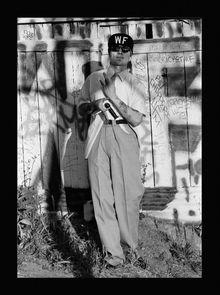PHOTOGRAPHY MONOGRAPHS
|
|
in stock $70.00 Free Shipping UPS GROUND IN THE CONTINENTAL U.S. |
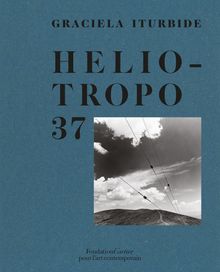 Graciela Iturbide: Heliotropo 37
Graciela Iturbide: Heliotropo 37
Published by Fondation Cartier pour l'art contemporain.
Text by Eduardo Halfon. Interview by Fabienne Bradu. Photographs by Pablo López Luz.
Through more than 200 photographs, this luxurious volume presents Mexican photographer Graciela Iturbide’s most iconic works alongside an important selection of previously unpublished photographs and a series of color photographs specially commissioned by the Fondation Cartier.
Working mainly in black and white, Iturbide has explored the cohabitation between ancestral traditions and Catholic rites in Mexico, humanity’s relationship with death and the roles of women in society. In recent years, her photographs have emptied themselves of human presence, revealing the enigmatic life of objects and nature. In addition to her stark images of her homeland, this book also includes images from her series in India, the United States and elsewhere. Heliotropo 37, named for the photographer’s address in Mexico City, also contains an interview with the photographer by French essayist Fabienne Bradu, an original short story by Guatemalan writer Eduardo Halfon and a photo-portrait of Iturbide’s studio by Mexican photographer Pablo López Luz.
One of the most influential photographers active in Latin America today, Mexican photographer Graciela Iturbide (born 1942) began studying photography in the 1970s with legendary photographer Manuel Álvarez Bravo. Seeking “to explore and articulate the ways in which a vocable such as 'Mexico' is meaningful only when understood as an intricate combination of histories and practices,” as she puts it, Iturbide has created a nuanced and sensitive documentary record of contemporary Mexico. She lives and works in Mexico City.
PUBLISHER
Fondation Cartier pour l'art contemporain
BOOK FORMAT
Hardcover, 9.25 x 11.5 in. / 304 pgs / 30 color / 220 bw.
PUBLISHING STATUS
Pub Date 5/3/2022
Active
DISTRIBUTION
D.A.P. Exclusive
Catalog: SPRING 2022 p. 37
PRODUCT DETAILS
ISBN 9782869251618 TRADE
List Price: $55.00 CAD $75.00
AVAILABILITY
In stock
in stock $55.00 Free Shipping UPS GROUND IN THE CONTINENTAL U.S. |
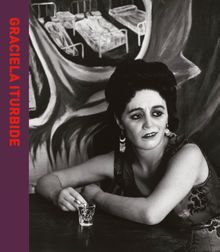 Graciela Iturbide
Graciela Iturbide
Published by RM/Fundación Mapfre.
Introduction by Marta Dahó. Text by Juan Villoro, Carlos Martín García.
This is the largest survey yet published on the work of Graciela Iturbide, the most acclaimed photographer working in Latin America and winner of the 2008 Hasselblad Award. It includes 180 representative photographs spanning her career, focusing on her best-known work, such as Frida Kahlo's Bedroom, Those Who Live in the Sand and Juchitán.
Over the course of her four-decade career, Iturbide has built up a poetic language of images and symbols; a consistent preoccupation is the juxtaposition between urban and rural life. The subjects of her black-and-white photography mostly reside in Latin America but encompass India, Europe and Asia as well. This volume provides an essential overview of her accomplishment.
PUBLISHER
RM/Fundación Mapfre
BOOK FORMAT
Hardcover, 8.75 x 9.75 in. / 292 pgs / 188 bw.
PUBLISHING STATUS
Pub Date 2/19/2019
Out of print
DISTRIBUTION
D.A.P. Exclusive
Catalog: SPRING 2019 p. 152
PRODUCT DETAILS
ISBN 9788417047702 FLAT40
List Price: $65.00 CAD $90.00
AVAILABILITY
Not available
STATUS: Out of print | 00/00/00 For assistance locating a copy, please see our list of recommended out of print specialists |
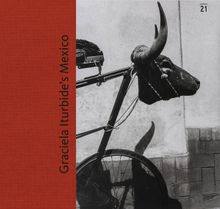 Graciela Iturbide’s Mexico
Graciela Iturbide’s Mexico
Photographs
Published by MFA Publications, Museum of Fine Arts, Boston.
Text by Kristen Gresh. Contributions by Guillermo Sheridan.
Graciela Iturbide, best known for her iconic photographs of Mexican indigenous women, has engaged with her homeland as a subject for the past 50 years in images of great variety and depth. The intensely personal, lyrical photographs collected and interpreted in this book show that, for Iturbide, photography is a way of life—as well as a way of seeing and understanding Mexico, with all its beauties, rituals, challenges and contradictions.
The Mexico portrayed here is a country in constant transition, defined by tensions and exchanges between new and old, urban and rural, traditional and modern. Iturbide’s deep connection with her subjects—among them political protests, celebrations and rituals, desert landscapes, cities, places of burial and Mexico’s artistic heritage—produces indelible images that encompass dreams, symbols, reality and daily life.
Published to accompany the first major museum exhibition of Iturbide’s work on the East Coast, this volume presents more than 100 beautifully reproduced black-and-white photographs, accompanied by illuminating essays inviting readers to share in Graciela Iturbide’s personal artistic journey through the country she knows so intimately.
One of the most influential photographers active in Latin America today, Mexican photographer Graciela Iturbide (born 1942) began studying photography in the 1970s with legendary photographer Manuel Álvarez Bravo. Seeking “to explore and articulate the ways in which a vocable such as 'Mexico' is meaningful only when understood as an intricate combination of histories and practices,” as she puts it, Iturbide has created a nuanced and sensitive documentary record of contemporary Mexico.
PUBLISHER
MFA Publications, Museum of Fine Arts, Boston
BOOK FORMAT
Hardcover, 9.75 x 9.25 in. / 240 pgs / 135 bw.
PUBLISHING STATUS
Pub Date 2/19/2019
Out of stock indefinitely
DISTRIBUTION
D.A.P. Exclusive
Catalog: SPRING 2019 p. 14
PRODUCT DETAILS
ISBN 9780878468584 TRADE
List Price: $49.95 CAD $69.95 GBP £35.00
AVAILABILITY
Not available
STATUS: Out of stock indefinitely. |
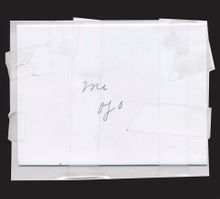 Graciela Iturbide: Mi Ojo
Graciela Iturbide: Mi Ojo
Published by RM.
PUBLISHER
RM
BOOK FORMAT
Paperback, 5.5 x 5.25 in. / 128 pgs / 49 bw.
PUBLISHING STATUS
Pub Date 3/28/2017
Active
DISTRIBUTION
D.A.P. Exclusive
Catalog: SPRING 2017 p. 136
PRODUCT DETAILS
ISBN 9788416282814 SDNR40
List Price: $39.00 CAD $52.50 GBP £36.00
AVAILABILITY
Out of stock
STATUS: Out of stock Temporarily out of stock pending additional inventory. |
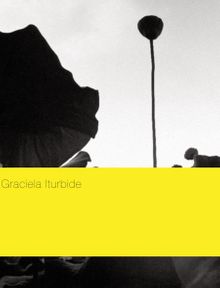 Graciela Iturbide
Graciela Iturbide
Published by RM/Museo Amparo.
PUBLISHER
RM/Museo Amparo
BOOK FORMAT
Hardcover, 7 x 9 in. / 144 pgs / illustrated throughout.
PUBLISHING STATUS
Pub Date 8/31/2012
Out of print
DISTRIBUTION
D.A.P. Exclusive
Catalog: FALL 2012 p. 81
PRODUCT DETAILS
ISBN 9788415118213 TRADE
List Price: $50.00 CAD $67.50
AVAILABILITY
Not available
STATUS: Out of print | 00/00/00 For assistance locating a copy, please see our list of recommended out of print specialists |
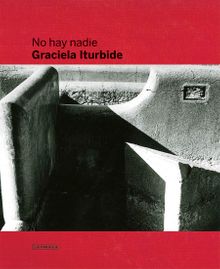 Graciela Iturbide: No Hay Nadie, There is No-One
Graciela Iturbide: No Hay Nadie, There is No-One
Published by La Fábrica.
Text by Óscar Pujol.
PUBLISHER
La Fábrica
BOOK FORMAT
Clth, 9 x 11 in. / 72 pgs / illustrated throughout.
PUBLISHING STATUS
Pub Date 10/31/2011
Out of print
DISTRIBUTION
D.A.P. Exclusive
Catalog: FALL 2011 p. 96
PRODUCT DETAILS
ISBN 9788415303176 TRADE
List Price: $55.00 CAD $65.00
AVAILABILITY
Not available
STATUS: Out of print | 00/00/00 For assistance locating a copy, please see our list of recommended out of print specialists |
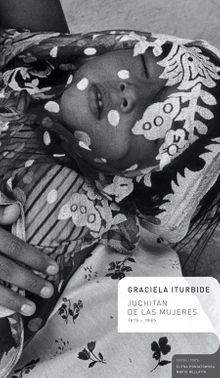 Graciela Iturbide: Juchitan de Las Mujeres 1979-1989
Graciela Iturbide: Juchitan de Las Mujeres 1979-1989
Published by RM/Editorial Calamus.
Text by Mario Bellatín, Elena Poniatowska.
PUBLISHER
RM/Editorial Calamus
BOOK FORMAT
Hardcover, 8.5 x 14.75 in. / 104 pgs / 75 tritone.
PUBLISHING STATUS
Pub Date 7/31/2010
Out of print
DISTRIBUTION
D.A.P. Exclusive
Catalog: FALL 2009 p. 96
PRODUCT DETAILS
ISBN 9788492480531 TRADE
List Price: $65.00 CAD $87.00
AVAILABILITY
Not available
STATUS: Out of print | 00/00/00 For assistance locating a copy, please see our list of recommended out of print specialists |
 Graciela Iturbide: Images of the Spirit
Graciela Iturbide: Images of the Spirit
Published by Aperture.
Preface by Roberto Tejada. Epilogue by Alfredo Lopez Austin.
PUBLISHER
Aperture
BOOK FORMAT
Paperback, 11.75 x 9.75 in. / 128 pgs.
PUBLISHING STATUS
Pub Date 9/1/2006
No longer our product
DISTRIBUTION
Contact Publisher
Catalog:
PRODUCT DETAILS
ISBN 9780893818326 TRADE
List Price: $29.95 CAD $35.00
AVAILABILITY
Not Available

